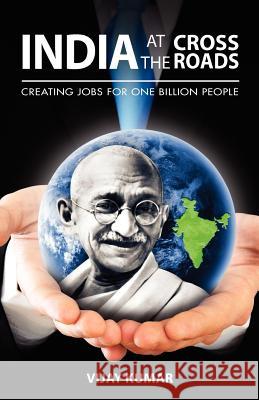India At The Crossroads: Creating Jobs For One Billion People » książka
India At The Crossroads: Creating Jobs For One Billion People
ISBN-13: 9781480181571 / Angielski / Miękka / 2012 / 322 str.
This book looks at the holistic picture of India. It suggests many practical ideas and solutions to overcome its rural challenges. These suggestions and recommendations are within India's economic means. The most essential need in India is to generate jobs, especially in rural locations, and to move forward at a faster pace. India should attack rural poverty simultaneously from many sides. There is a need for creation of new towns in hubs of villages with inbuilt potential to grow. India needs new towns in rural areas, with a little seed money from the central government, and leaving the rest of the development to the private sector. If we do not improve the economic condition of rural India, slums will keep on increasing in big cities. Rural people come to big cities in search of jobs. Demographic changes could have positive effects on India. Demographic shift and education have a huge impact on economic performance, as younger workers are more energetic and more open to new technology. These circumstances were very similar to what existed in other Asian countries at the time of 'take-off'. China's recent stellar performance may be profound due to its sheer scale and speed. There is a need to encourage private capital to move from urban to rural areas. India needs labour intensive industries. Public sector and private industries should increase their presence in rural India. Public sector is very healthy now. There are new opportunities for public sector to grow in rural India and improve job opportunities. Technologies available in India today should be spread throughout India in all regions. Self employment should be increased in rural India with the help of microloans from banks. Solar and wind energy should be used to produce electricity in rural areas. Electricity has direct impact on vocational training and education. Vocational training should be offered once a week in the rural school education system. This book compares similarities and differences of India and China. It also suggests what the two countries can and must learn from each other.











